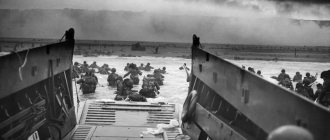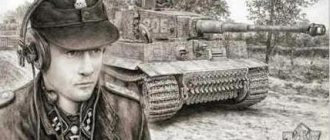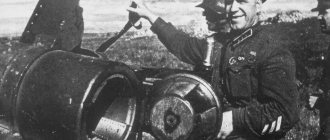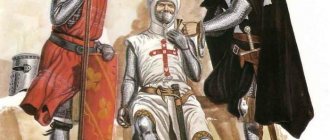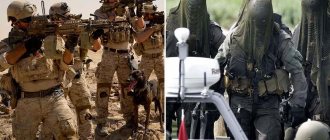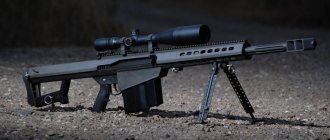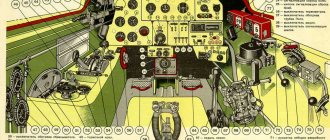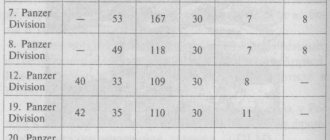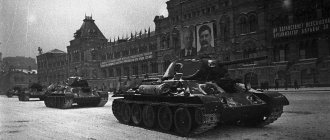Battle of Cambrai
In November 1917, a large-scale battle took place between British and German troops. In the First World War, the British command decided to use a large number of armored vehicles to break through positional defenses. The French city was not chosen by chance - 12 km of flat terrain was available for a tank attack.
The British infantry trained together with combat vehicles in order to independently break through enemy defenses. Tanks were brought to the front only in the evening under artillery fire from mortars and machine guns in order to drown out the roar of the engines. Planning to throw the Germans into confusion with a surprise attack, 92,000 British came out with 476 tanks against 36,000 opponents.
The positions of the German army were strongly fortified not only from the rear, and the number of guns exceeded 1,500. The first British tanks to emerge opened fire, the second rank dropped brushwood, fastened with a chain, to overcome the trenches. The third formation of vehicles stepped forward and threw down brushwood for the first tanks. The infantry followed the battleships and was also divided into three groups. The first cleared the trenches, the second blocked, and the third detachment supported.
In the first hours of the battle, the Germans lost many strong points and positions. But the indecisive actions of the Canadian cavalry allowed the enemy to stop the breakthrough and gain a foothold on the front line. By the end of November, the Germans completely managed to stop the advance of the British army and bring up significant reserve forces.
During the counteroffensive, the Germans managed to force the enemy troops to return to their original positions, with the remaining 73 combat vehicles. The losses of both sides were approximately the same - 9,000 British and 11,000 Germans. The battle ended on December 7, showing by example the importance of interaction between different troops.
Battle of Cambrai (1917)
0
After failures using small tank formations, the British command decided to carry out an offensive using a large number of tanks. Since the tanks had previously failed to live up to expectations, many considered them useless. One British officer, Fr. According to the British command, the upcoming offensive was supposed to begin without traditional artillery preparation. For the first time in history, tanks themselves had to break through enemy defenses. The offensive at Cambrai was supposed to take the German command by surprise. The operation was prepared in strict secrecy. Tanks were transported to the front in the evening. The British constantly fired machine guns and mortars to drown out the roar of tank engines. A total of 476 tanks took part in the offensive. The German divisions were defeated and suffered heavy losses. The well-fortified Hindenburg Line was penetrated to great depths. However, during the German counter-offensive, British troops were forced to retreat. Using the remaining 73 tanks, the British managed to prevent a more serious defeat.
Battle of Dubno - Lutsk - Brody
The first major tank battle of World War II took place in the last week of June 1941. The number of Soviet vehicles outnumbered the German ones by almost four times: 2803 versus 800. The army of the Third Reich had superior combat experience. Soviet tank crews had 2-3 hours of experience driving combat vehicles, compared to 50 hours of enemy training.
The T-34's armor could not withstand the fire of 88 ml anti-aircraft guns, which the Germans took advantage of, shooting 20-30 guns per hour. Subsequently, these guns were installed on the Tiger and other guns.
The Soviet command hoped to defeat the main forces of the enemy and provide support to the Western Front. Poor radio communications, inept tank attacks, shortages and even lack of shells brought huge losses in a week. During 14 days of battle, out of 5826 Soviet vehicles, 4381 units failed. And here the German army had an advantage, repairing its battleships and taking trophies. The enemy army irretrievably lost 186 units. 222 combat vehicles were repaired.
The planned unified offensive was reduced to counterattacks in different directions. Soviet troops were only able to slightly delay the occupier's advance and thwart his plans to attack Kyiv. The coordinated actions of the German command made it possible to repel attacks and inflict the first defeat on the armies of the Southwestern Front during the Great Patriotic War.
The three most brutal tank battles in history: how it happened (PHOTO)
Of all the types of troops, tanks are still the most important. As for the importance of heavy armored vehicles in a real combat situation, it is difficult to overestimate it even in the modern rocket and space era.
What can we say about the period of World War II, when the main, key battles were primarily tank battles. This time we will talk about the three greatest tank battles of this war - in 1941 near Dubno, in 1942 near El Alamein and, of course, near Prokhorovka in 1943.
The three most brutal tank battles in history are in the material of the Reedus publication.
June 1941: Battle of Dubno
Recently, it has become fashionable for historians and publicists to assign the title of the largest tank battle to the battle of Prokhorovka, while another, less well-known, but no less bloody battle, near Dubno on June 23–28, 1941, played no less a role during the war.
There is a certain logic to this. Already there and then, the outcome of the fighting on the entire Soviet-German front could have been predetermined, but under one condition: if the Red Army tankers had gained the upper hand. Alas, this did not happen, although there were excellent opportunities for this.
What happened in and around the western Ukrainian city of Dubno can be called the largest tank battle solely for arithmetic reasons. There were more heavy combat vehicles that took part in it than on the Prokhorovsky field. And indeed it is.
June 27, 1941, when the Soviet mechanized corps were closest to achieving triumph. If it had happened then, perhaps the enemy would never have reached Prokhorovka, but, unfortunately, everything did not turn out so well.
Victory, as is now clear, was very close then. It was only necessary to support the group under the command of Brigade Commissar N.K. with neighboring units. Popel, who fought to the outskirts of Dubno. It could well have cut off the communications of the 1st Nazi Panzer Group, effectively encircling it.
But the infantry units, instead of moving along with the tankers, for some reason covered them from the rear. As a result, they were unable to cover the tanks.
It was customary in Soviet historiography to represent Commissar N.N. Vashugin was almost a tyrant, who ordered an attack with only part of his forces and threatened to shoot him. But he acted correctly - it was not his fault that the command of the Southwestern Front showed outright indecisiveness.
Not even all the tank units that had already been deployed took part in the offensive. It was out of despair that N.N. most likely shot himself. Vashugin, from the realization of his own powerlessness to help the units he sent into an obviously losing battle.
It may not have happened without betrayal, otherwise how can one explain why the main striking force of the entire Red Army is the 4th Mechanized Corps under the command of that same A.A. Vlasov - did not take part in the decisive battle?
Purely formally, he acted within the framework of the instructions of the command of the Southwestern Front, which, instead of the attack on Lublin prescribed by Headquarters, decided only on a local operation near Dubno.
However, it could have brought success if, for example, the tankers of the later famous commander M.E. had made their way to meet Popel’s tankmen. Katukova. But his 20th Tank Division and the remaining units of the 9th Mechanized Corps under the command of another legendary Soviet military leader K.K. Rokossovsky could not cope with the powerful and trained anti-tank defense of the Nazis. .
As a result, the Nazis quickly recovered from the unexpected breakthrough of the Popelevites to their rear and first stopped them almost on the streets of Dubno, and then took them in a pincer movement and defeated them, forcing all other Soviet tank forces to go on the defensive.
The latter suffered very heavy losses not only in battle, but also on the march due to breakdowns, lack of fuel and enemy air strikes. So, instead of a very real triumph, it turned out to be a terrible defeat.
July - November 1942: Battle of El Alamein
The British also had their greatest tank battle during World War II. It happened near the Egyptian town of El Alamein in 1942. Strictly speaking, it didn’t happen, but continued throughout the second half of this year.
About this battle, as well as about most others that happened on their fronts, in addition to the Soviet-German one, Russian and Western historiography have very different ideas. If in the West it is customary to attach exaggerated significance to them, in our country, on the contrary, it is in the order of things to emphasize the secondary nature of what happened in North Africa.
The truth, as usual, is in the middle: of course, the main battles took place on the fields near Moscow, in the trenches of Stalingrad and the Kursk Bulge. But if significant forces of the Nazis had not been distracted by the same battles near El Alamein, it would have been even more difficult to contain the enemy of the Red Army.
And strategically: if the Nazis had managed to cut the Suez Canal, this would have significantly strengthened their position. The capture of Alexandria and Cairo could push Turkey to participate in the war on their side.
In terms of its scale, the battle in the Egyptian desert was very impressive. In terms of the number of participants, it was inferior to the battles of Dubno, where over 3,000 tanks took part on both sides, but was superior to the battle of Prokhorovka - approximately 1,500 versus 1,200.
One way or another, tank duels at El Alamein were extremely important even thousands of kilometers away. And from a moral point of view, because the success of the English brothers in arms strengthened the already high spirit of the defenders of Stalingrad. In turn, their heroism most dramatically influenced the course and result of the battle in Egypt.
First of all, thanks to them, at first the “desert fox” - German Field Marshal E. Rommel - did not receive the two missing divisions, since they were sent by Hitler to the Eastern Front. Then, because of the desire to take Stalingrad at any cost, the Fuhrer also took A. Kesselring’s 2nd Air Fleet from Italy.
Thus, in the midst of the battles for the “doorknob of Alexandria” (as Rommel defined it), he lost air protection and fuel supply routes. British aircraft sank several Italian transports - and Nazi tanks lost the ability to move.
First Battle of El Alamein
A major tank battle between the Nazi coalition and the Allied forces took place in July 1942. The Axis offensive forces in northern Africa were led by Field Marshal Rommel, nicknamed the Desert Fox. The goal was the defeat of British troops, entry into Egypt, and the capture of Alexandria and the Suez Canal.
Many attempts to attack the USSR's allies were unsuccessful and the German-Italian tank army "Africa" was driven back. Deliveries of German military equipment were carried out intermittently and were subject to air raids. Most of the weapons did not reach the front.
The anti-Hitler coalition concentrated 1,114 combat vehicles and 150,000 people against 585 tanks and 96,000 soldiers. The German general had to use anti-tank artillery, among which were captured Soviet 76 mm guns. The Allies' superior numbers forced Rommel's troops to retreat. They have just over 30 armored vehicles left.
British troops lost about 500 battleships, many of which were repaired. Among the dead and wounded were 17,000 of Hitler's soldiers and about 19,000 of the enemy. This battle was a strategic victory, stopping the advance of the German-Italian army towards Alexandria.
Battle of Kursk: Battle of Prokhorovka
After the unsuccessful attack on Stalingrad, the German command decided to capture Kursk and surrounding areas. Operation Citadel began in early July 1943. Having encountered powerful resistance in Oboyan, the Germans decided to transfer the main forces to the Prokhorovka station and launch an offensive from the south. According to some representatives of the General Staff of the USSR Armed Forces, the largest tank battle took place at Prokhorovka station.
Preparing for the attack on July 12, the Germans hoped to break the Soviet troops at 9 am. Stalin had everything that happened under his control. The Soviet leader created the reserve 5th Tank Army under the command of Pavel Rotmistrov. The warriors of this guard were brought forward and many fell heroes of the Fatherland.
Initially, Soviet troops were supposed to go on the offensive at 10 a.m. But at the last moment the operation time was changed to 8:30. As a result, the tank forces of the Germans and the Soviet army met head-on. Panthers and Tigers, unlike the T-34, hit targets at a distance of up to 2000 meters. Soviet tankers had to get at least 500 m to destroy enemy equipment.
Soviet troops were subjected to targeted artillery and aviation fire. Among those who controlled the tanks there were many untrained and those who entered the first battle. Despite the lack of ammunition and air support, the soldiers fought bravely, breaking through enemy lines and fighting in close combat.
According to some reports, 20 Soviet combat vehicles went to ram against the invaders' tanks when the shells ran out.
In the tank battle, both sides suffered huge losses of equipment and personnel. Today, some historians consider the figures in the report of the parties to the Second World War to be overestimated. In the reporting table, the Germans recorded a total of 413 armored vehicles as of the morning of July 12. In the Soviet encyclopedia, in different publications, up to 1,500 combat vehicles are indicated.
This battle turned the course of history and served as a powerful rebuff to the Nazis, who after the battle went on the defensive all the way to Berlin.
Battle of Prokhorovka (1943)
The tank battle near Prokhorovka took place on July 12, 1943 as part of the Battle of Kursk. According to official Soviet data, 800 Soviet tanks and self-propelled guns and 700 German ones took part in it on both sides. The Germans lost 350 units of armored vehicles, ours - 300. But the trick is that the Soviet tanks that took part in the battle were counted, and the German ones were those that were generally in the entire German group on the southern flank of the Kursk Bulge. According to new, updated data, 311 German tanks and self-propelled guns of the 2nd SS Tank Corps took part in the tank battle near Prokhorovka against 597 Soviet 5th Guards Tank Army (commander Rotmistrov). The SS lost about 70 (22%), and the guards lost 343 (57%) armored vehicles. Neither side managed to achieve its goals: the Germans failed to break through the Soviet defenses and enter the operational space, and the Soviet troops failed to encircle the enemy group. A government commission was created to investigate the reasons for the large losses of Soviet tanks. The commission's report called the military actions of Soviet troops near Prokhorovka "an example of an unsuccessful operation." General Rotmistrov was going to be put on trial, but by that time the general situation had developed favorably, and everything worked out.
Yom Kippur War Golan Heights
During the Six Day War in 1967, with the support of the Arab states, Egypt and Syria attempted to regain their territories after six years. The attack was planned and unexpected as the Israelis celebrated the Jewish holiday of Yom Kippur, which means “day of judgment.”
When the Israeli army lined up, it was hit by enemy artillery, followed by an air raid. Defense came at a great price. The Golan Heights was an important strategic point and if it were to break through, the Arab army would be in the very center of Israel within a few hours.
On the Arab side were the Soviet T-55s with a 100 mm mount and a range of 2700 m. As well as their improved model T-80.
Although Israel managed to restrain the enemy, in the first half of the battle the side suffered heavy losses. 180 tanks had to resist 1,300 enemy vehicles. Most of the Israeli soldiers were in reserve, so it took time to regroup. They began to arrive after a 10-hour attack, which disrupted the plans of the Syrians, who were counting on 20 hours.
The offensive was stopped on October 8, and on the 10th, coalition troops were pushed beyond the double ceasefire line. But Israel decided to advance, and by the end of the conflict, combat units were 100 km from Cairo. In 1974, under pressure from the USA and the USSR, agreements were signed in turn on the disengagement of the troops of Israel, Syria and Egypt.
Of the 1,700 participating battleships on the Israeli side, 810 were losses. Many Israeli high-ranking officers were killed and captured. About 3,000 people were among the dead. Having 3,630 tanks, the Arab coalition lost 1,775 units of equipment. Among the personnel there are up to 18,000 dead.
Battle 73 Easting
The battle between US troops and the Iraqi Republican Guard took place in 1991 in southern Iraq. It was the last major battle of the 20th century and the first using GPS. American troops were supposed to cut off the Iranians' retreat from Kuwaiti territory.
Sandstorms raged over the area, which affected visibility. The meeting of opponents surprised both sides. But the American Abrams were faster, turning the advantage to their side. US combat vehicles rushed between Iraqi troops, destroying equipment. Artillery support allowed the American military to quickly end the battle with minimal losses.
About a thousand people were killed and wounded on the Iraqi side. The Americans say they lost one tank and destroyed 160 units. However, according to the Soviet military attaché in Iraq, US losses amounted to 68 combat vehicles. For confirmation, photographs of the destroyed M1s were sent to Moscow, classified as “secret”. Thanks to technical and numerical superiority, the Americans defeated the Iraqi troops.
The viewer experiences a complete view of tank warfare: a bird's eye view, from the soldiers' point of view of face-to-face confrontation and the careful technical analysis of military historians. From the mighty 88mm gun of the German Tigers of World War II, to the thermal guidance system of the Gulf War M-1 Abrams, each episode explores the significant technical details that defined an era of battle. Self-PR of the American Army, some descriptions of battles are full of errors and absurdities, it all comes down to the great and all-powerful American technology.
Great Tank Battles brings the full intensity of mechanized warfare to the screens for the first time, analyzing weapons, defenses, tactics and using ultra-realistic CGI animations. Most of the documentaries in the series relate to the Second World War. Overall, excellent material that needs to be double-checked before being believed.
1. Battle of Easting 73
: The harsh, godforsaken desert of southern Iraq is home to the most merciless sandstorms, but today we will see another storm.
During the 1991 Gulf War, the US 2nd Armored Regiment was caught in a sandstorm. This was the last major battle of the 20th century. 2. Yom Kippur War: Battle for the Golan Heights
/ The October War: Battle For The Golan Heights: In 1973, Syria unexpectedly carried out an attack on Israel.
How did several tanks manage to hold off superior enemy forces? 3. The Battle of El Alamein
/ The Battles Of El Alamein: Northern Africa, 1944: about 600 tanks of the combined Italian-German army broke through the Sahara desert into Egypt.
The British deployed almost 1,200 tanks to stop them. Two legendary commanders: Montgomery and Rommel fought for control of North Africa and the oil of the Middle East. 4. The Ardennes operation: the battle of the PT-1 tanks - a throw to Bastogne
/ The Ardennes: On September 16, 1944, German tanks invaded the Ardennes forest in Belgium.
The Germans attacked American units in an attempt to change the course of the war. The Americans responded with one of the most massive counterattacks in the history of their military operations. 5. Operation of the Ardennes: battle of the PT-2 tanks - attack of the German “Joachim Pipers”
/ The Ardennes: 12/16/1944 In December 1944, the most loyal and ruthless killers of the Third Reich, the Waffen-SS, carried out Hitler’s last offensive in the west.
This is the story of the incredible breakthrough of the Nazi Sixth Armored Army of the American line and its subsequent encirclement and defeat. 6. Operation Blockbuster - Battle of Hochwald
(02/08/1945) On February 8, 1945, the Canadian Armed Forces launched an attack in the Hochwald Gap area with the goal of giving Allied troops access to the very heart of Germany.
7. The Battle of Normandy
June 6, 1944 Canadian tanks and infantry land on the Normandy coast and come under deadly fire, coming face to face with the most powerful German vehicles: armored SS tanks.
8. Battle of Kursk.
Part 1: Northern Front / The Battle Of Kursk: Northern Front In 1943, numerous Soviet and German armies collided in the greatest and deadliest tank battle in history.
9. Battle of Kursk.
Part 2: The Battle Of Kursk: Southern Front The battle near Kursk reaches its climax in the Russian village of Prokhorovka on July 12, 1943. This is the story of the biggest tank battle in military history, as elite SS troops face off against Soviet defenders determined to stop them at any cost.
10. The Battle of Arrcourt September 1944. When Patton's Third Army threatened to cross the German border, Hitler, in desperation, sent hundreds of tanks into a head-on collision.

